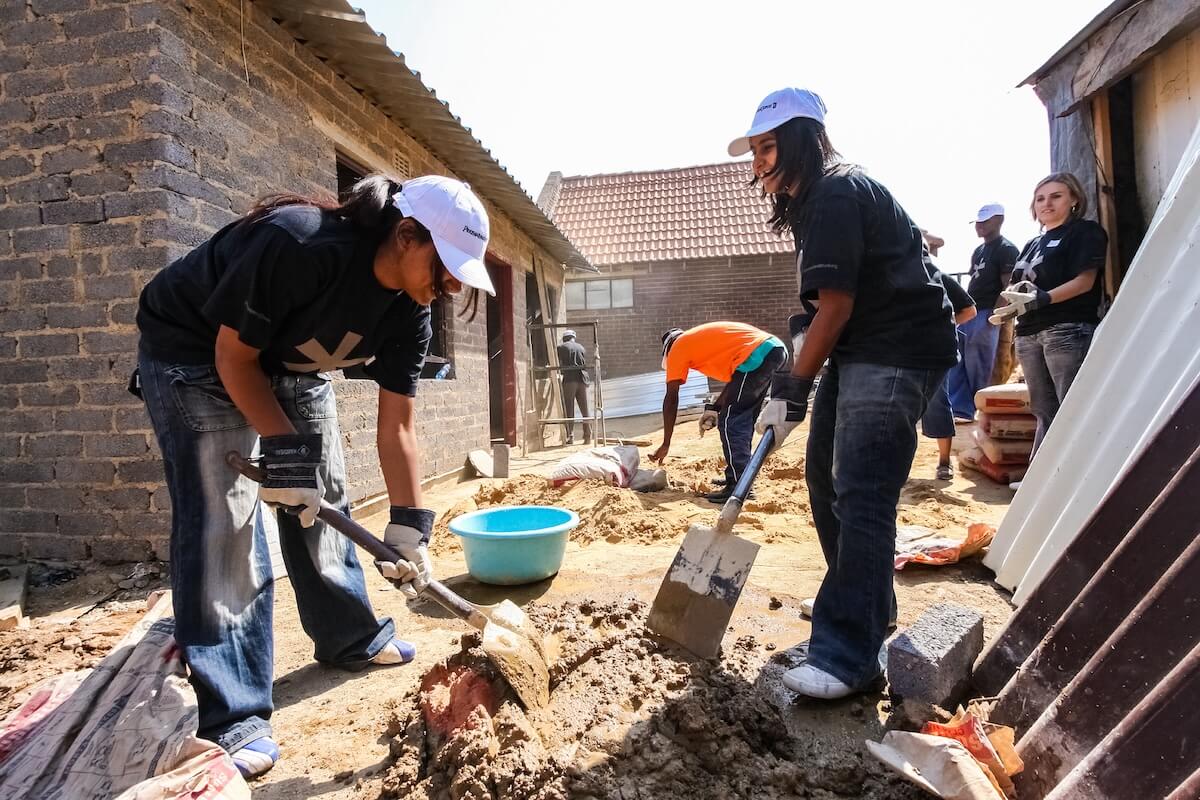India’s proposed social stock exchange has the potential to bridge the gap between investable capital and the country’s large and diverse social enterprise sector. It is important that the exchange (SSE) does not forego some of the most important principles of social impact – namely, inclusion, diversity and equality of opportunity for all deserving impact enterprises and organisations.
As envisioned, the SSE will not do enough to help small and underprepared social enterprises get listed in the first place, thereby excluding them from accessing the capital being drawn into the exchange. The exchange can take a more active role in creating support mechanisms for entities seeking to be listed.
The mandate
In September 2019, India’s financial markets regulator, the Securities and Exchange Board of India, formed a working group on the social stock exchange (SSE) proposed by the central government earlier in the year. The working group released its report on 1 June 2020. The report sets out a proposed structure for a SSE in India, which will allow non-profit organisations and for-profit enterprises to directly list on the exchange and raise funds from potential investors.
Focus on accountability as India’s social stock exchange takes shape
The SSE aims to attract philanthropic as well as risk capital. The report sets out the minimum reporting standards to be met by all entities listed on the SSE, initially and on an annual basis, which includes impact specific (e.g. impact assessment in the form of a ‘social impact scorecard’) and general (e.g. audited financial statements) requirements.
The SSE in India is an ambitious project, and the report has addressed a number of challenges that are likely to appear as it progresses. This includes capacity building measures to help entities which are listed on the SSE meet additional compliance burdens imposed as a consequence of their listing.
Building capacity
‘Capacity building’ broadly refers to the infrastructure, systems and institutions that come together to build a market ecosystem. The 2018 Progress Report of the UN Sustainable Stock Exchange Initiative has included capacity building within its five main action areas for stock exchanges. It recognises that exchanges play a crucial role in creating and helping enterprises and investors to better understand the exchange and market ecosystem. This is a key element in bridging the ‘investment gap’ in impact investing such that investable capital successfully meets potential investee enterprises.
Put simply, to successfully connect social enterprises with impact capital and sufficiently prepare such enterprises to receive this capital, all stakeholders need to speak a common language in which they communicate their aims and expectations. This common language takes shape when there is standardisation of the way in which impact is imagined, created and measured – as suggested in the working group’s report. However, this connection can only materialise equitably and inclusively if all actors in the ecosystem have access to this language and infrastructure.
Catalyzing finance for climate action in India: A Q&A with Tata Trusts’ Shloka Nath
In India, the social sector still has a long way to go in creating a shared vocabulary and streamlined processes to bring investors and investees together. This can be chalked down to various factors, including the vastness of the social sector, the many challenges surrounding standardisation of impact metrics, and the limited resources available to create a robust infrastructure for such a large and diverse set of stakeholders. The SSE is intended to catalyse the achievement of these objectives.
The report has suggested that the SSE itself should play a key role in contributing to capacity building objectives. It envisions information repositories to collect and provide credible information about the activities of non-profit organisations listed on the SSE and make them available to potential investors, and the eventual rise of social auditors who will be equipped to assess and report on social enterprises. However, until such social auditors come into existence, all entities are required to self-report as per the guidelines published by the SSE.
A key recommendation of the report is the formation of a capacity building fund with an initial corpus of INR 1 billion (approximately $13.2 million) which can be used to help non-profit organisations listed on the SSE to comply with increased reporting requirements and compliance burdens. The fund is envisioned to also contribute towards spreading awareness about fundraising through the SSE, implementing the reporting standards required of SSE listed entities, and organising the information repositories.
While these measures are useful for entities that will be listed on the SSE, enabling them to access investors and meet reporting standards, to access these facilities the entities will be required to meet the minimum listing thresholds prescribed by the SSE. The report has itself stated that the SSE is as much a process for “selecting-in only those entities that are creating measurable social impact and reporting such impact” as much as it is a place for connecting capital and enterprises. This may serve to exclude a number of businesses who are unable to meet such a threshold due to factors unrelated to how deserving they are of impact capital.
Exclusion risk
Much like its population, the social sector in India is very large and very diverse. The number of non-profit organisations and social enterprises in India are estimated at over five million. Many of these have received funding and support from investors, social incubators and accelerators to access social capital. However, this is a very small proportion of the social sector landscape, and many organisations working towards creating social impact are unable to access and harness these resources.
Apart from the size of the pool of potential investee entities, this inequality of access can be attributed to various factors such as investor bias towards particular sectors, inadequate leadership in such entities, a lack of awareness and understanding of the funding process and requirements, language barrier, and cultural barriers (e.g. imposed gender roles). Entities working towards creating impact that are seeking capital and are unable to access the support they need are also unable to prepare themselves adequately to approach investors and satisfy their expectations to receive funding.
Sankalp Global Summit keys in on entrepreneurial solutions to the Global Goals
These issues have persisted over the years of the development of the social impact sector in India, and the report aims to address these concerns through its capacity building suggestions. However, these measures will serve entities which are listed on the SSE, but not the entities which are unable to meet the listing requirements due to the various factors described above. The premise for this concern is twofold. First, that the creation of the SSE, if successful in achieving its stated objectives, is likely to streamline impact capital (philanthropic or otherwise) into the SSE framework, with little such capital available outside of it. Second, as described above, many unsupported social impact organisations and enterprises may be unable to meet the reporting and regulatory requirements that would allow them to participate in the SSE, which would further hamper their ability to access impact capital.
This potential risk can only be alleviated through the provision of a robust support and inclusion framework for such unlisted entities that are seeking capital, which is not provided for in the report.
To encourage listing by social enterprises and entities, the report does not go further than suggesting market making measures such as running awareness campaigns for enterprises to list on the SSE and active promotion of fundraising structures and instruments available on the SSE.
The framework set out in the report aims to use its reporting standards and compliance requirements to filter out organisations and enterprises that truly aim to create impact from those merely hoping to access capital through the SSE.
This is a double-edged sword, and as the SSE takes shape, it must take into account that listing requirements and additional reporting standards may also filter out deserving but unprepared impact enterprises unless they are provided with adequate support to fulfil them. The capacity building goals of the SSE must take a step back and account for deserving entities which have not been listed, and not just focus on listed entities.
A way forward
The SSE can consider taking a more active role in creating support mechanisms for underprepared entities seeking to be listed on the SSE.
The report on the state of the support ecosystem in India by the Centre for Social Impact and Philanthropy at Ashoka University has suggested that to fill the gaps in support available to non-profit organisations, ecosystem organisations should increase the range and reach of their services, and generate adequate data and research to improve the support services provided to such entities.
The SSE stands at a key position in being able to plug the holes in the support available to genuine impact enterprises and organisations that may be marginalised from the SSE framework due to factors beyond their control. This could take the form of active outreach (beyond merely spreading awareness) through existing structures such as government departments that oversee businesses and enterprises in their respective geographical jurisdiction.
Stock market climate mandates are on the ballot in U.K. election
Special education and training programs can also be formulated which are focused on entities that may potentially be listed on the SSE to fill gaps in their knowledge and to further understand the structure of the SSE and its compliance requirements.
The SSE may also set up intermediaries to prepare such entities for listing, similar to ‘Impact Partners’ which was set up by the IIX Exchange to facilitate investments into SSE listed entities, but in this case such intermediaries can focus on facilitating the listing process.
The resources of the proposed ‘capacity building fund’ could be used beyond simply providing financial assistance to listed entities struggling to meet the costs of compliance burdens, to also providing guidance to unlisted entities in meeting those requirements in the first place.
As a consequence of the unique challenges faced by social sector actors in India, the proposed SSE will be drawing its course in uncharted waters. The working group’s report has addressed a number of issues which are likely to be faced as the SSE is developed and set up. All eyes will be on India as this ambitious project progresses.
Chitrangda Singh is an associate at AZB & Partners in Mumbai. The views and opinions expressed in this article are those of the author and do not necessarily reflect the official policy or position of AZB & Partners.











